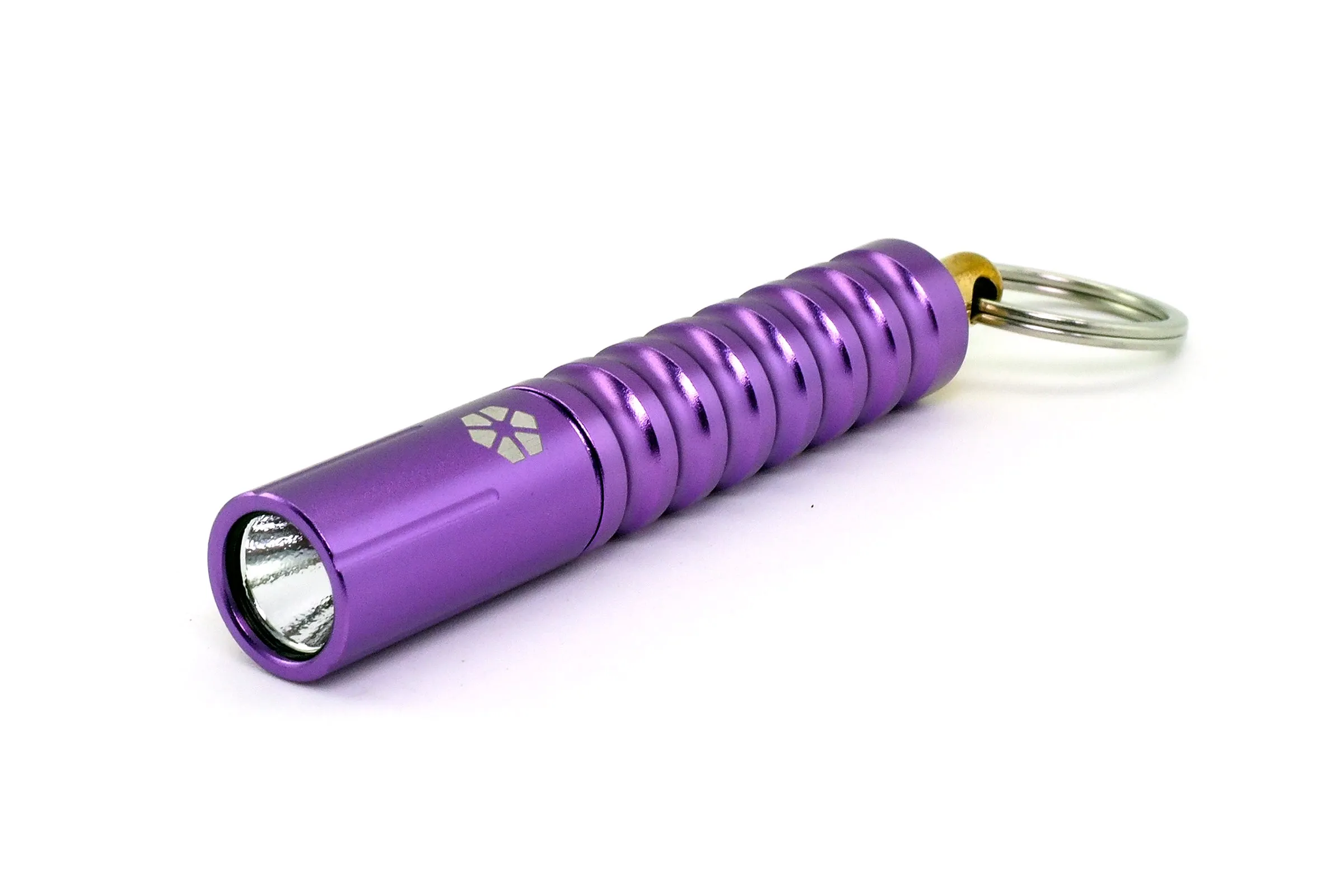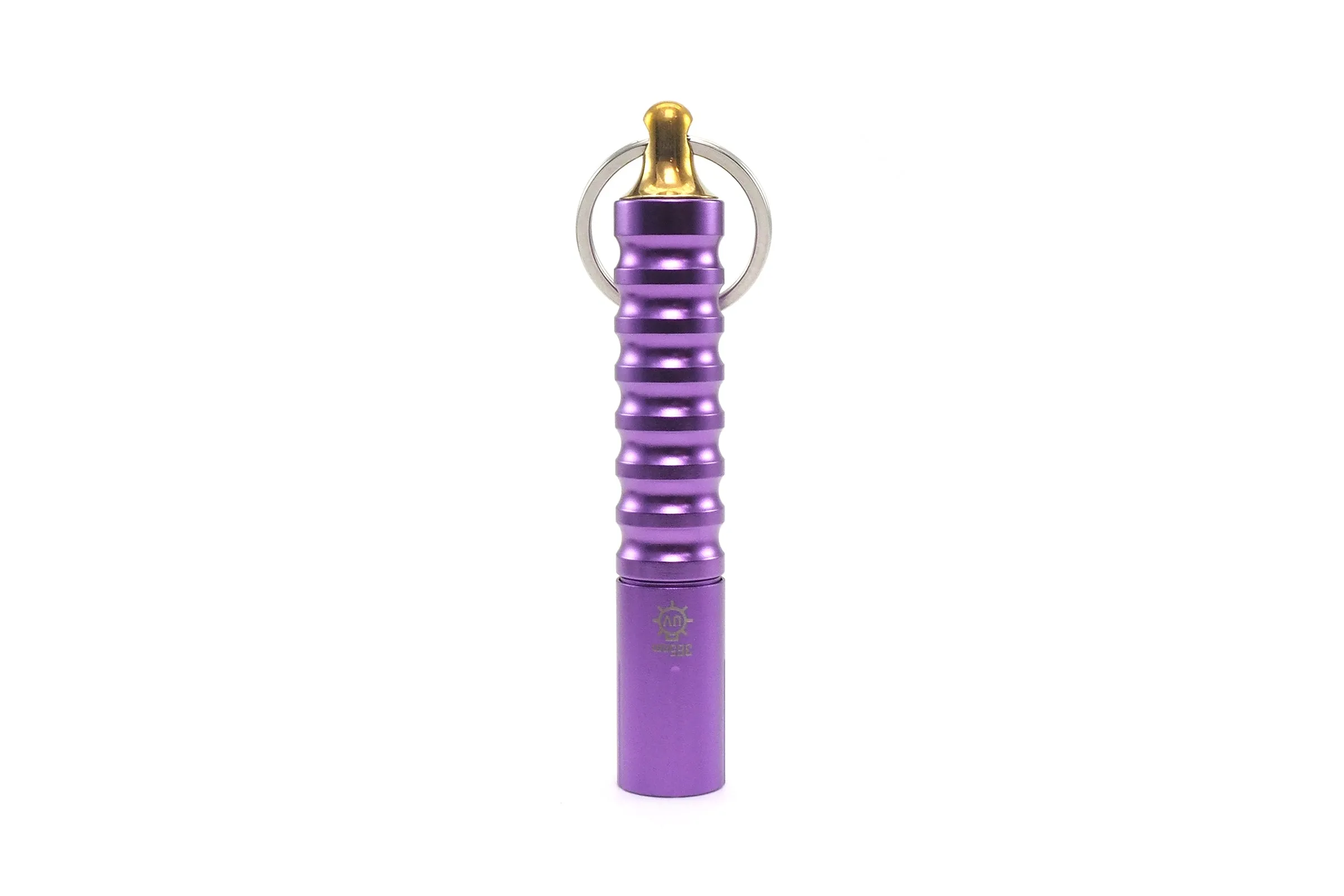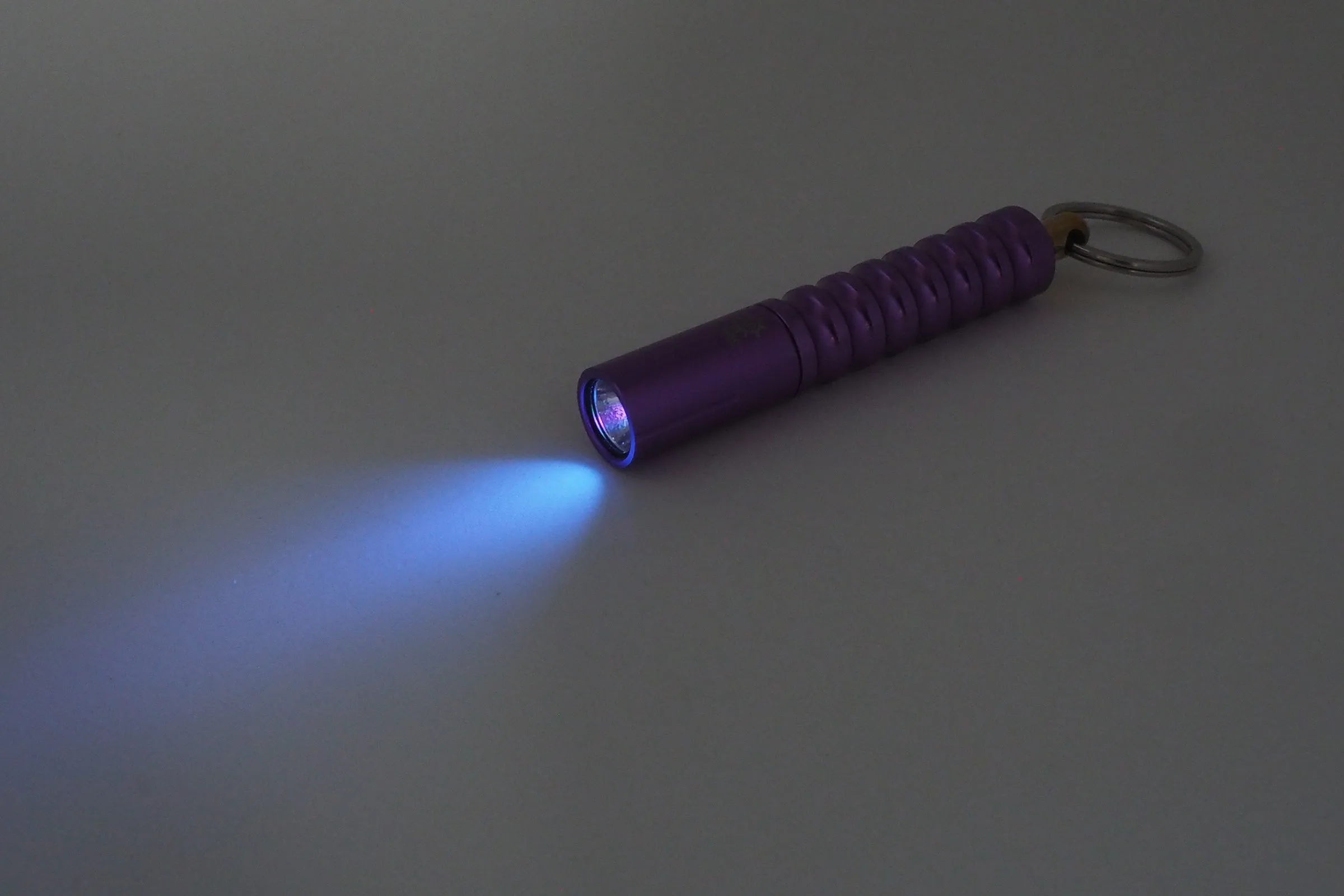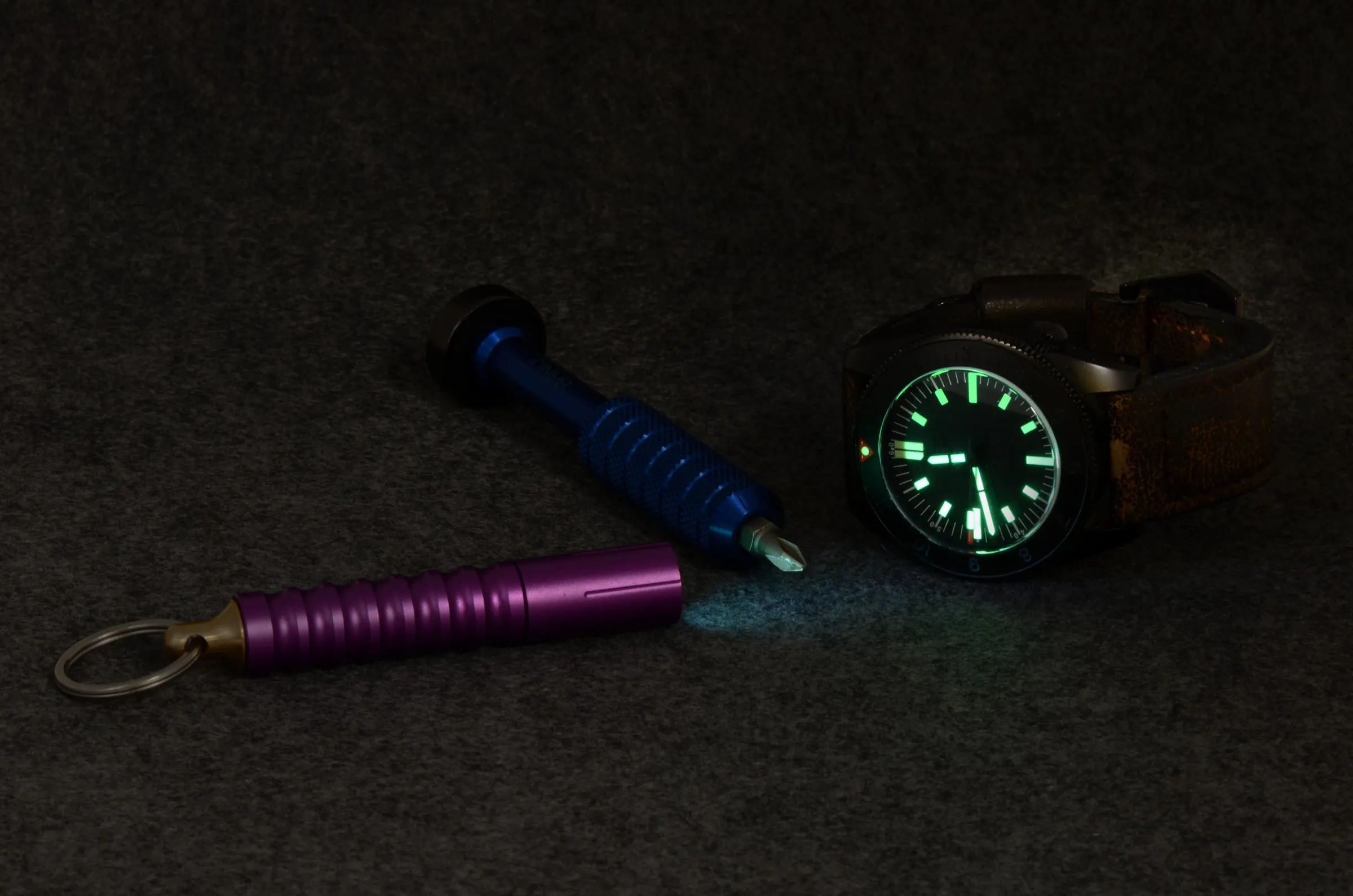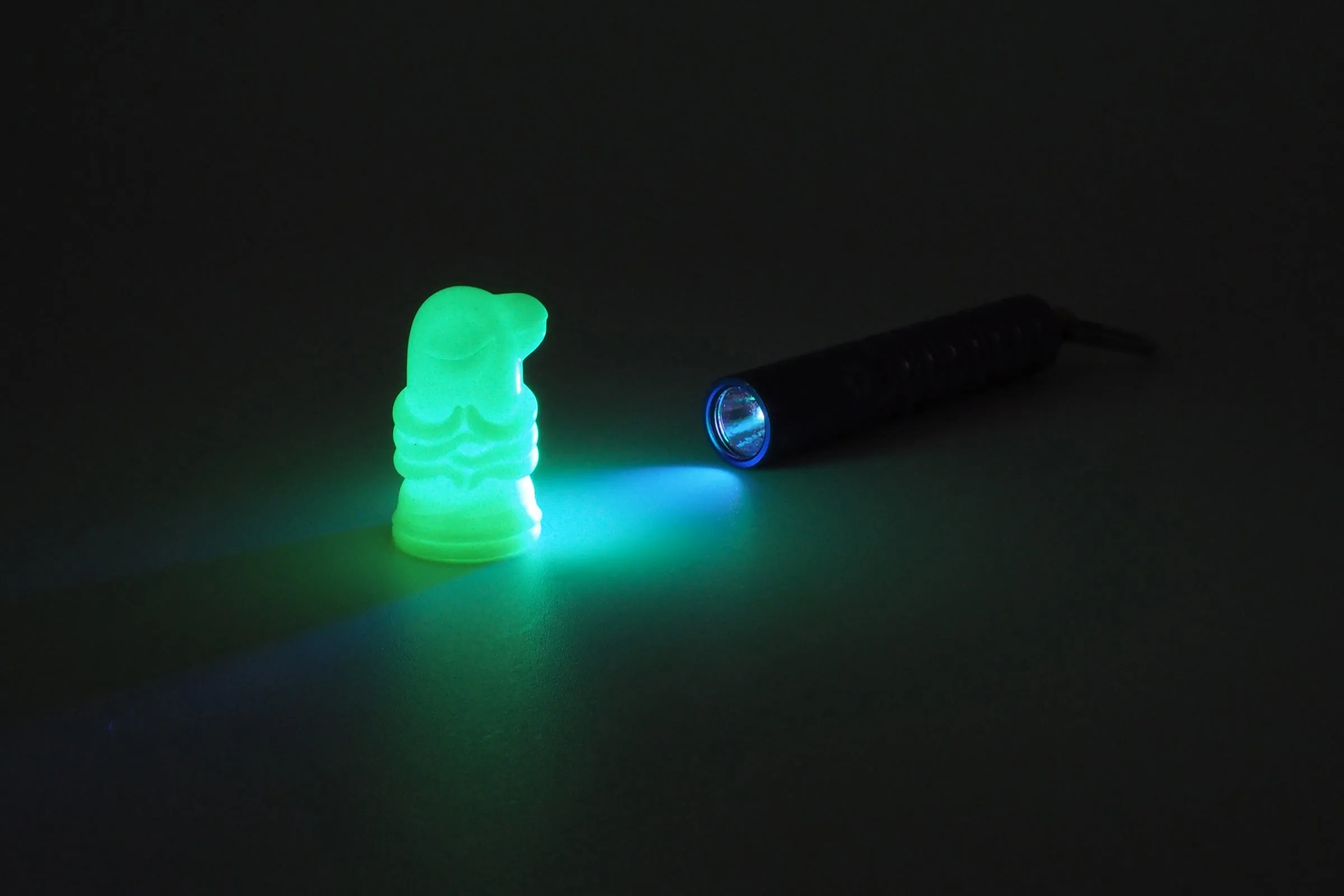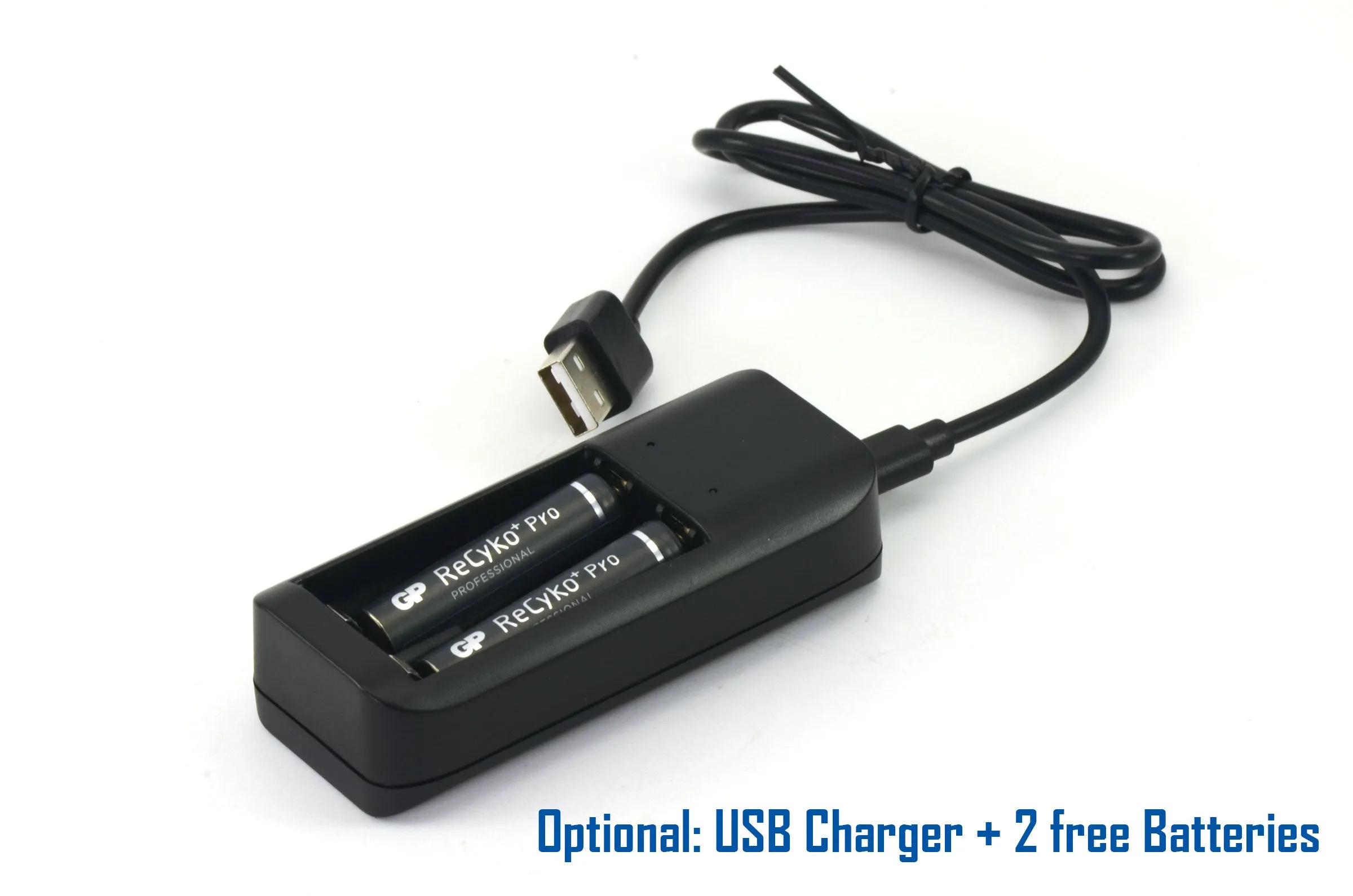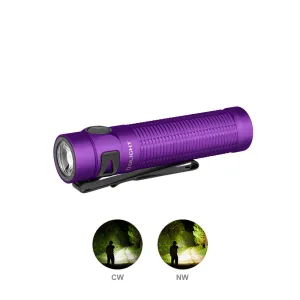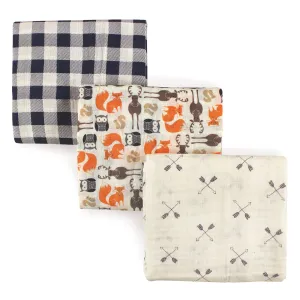The most fun you can have for $80 !
Your mileage may vary ;)
Based on the standard Beta QRv2 platform, the 365UV is designed to deliver. This project started as a contract for a pharmaceutical equipment manufacturing company, so this is NOT a "run of the mill" UV light. They wanted a strong and precise 365nm source to inspect the interior of their processing equipment. We've gone ahead and converted this specialty product to a regular (and very popular) offering.
|
UV radiation is hazardous. The Beta UV emits 90% of its output in the UV-A spectrum. This means the beam is almost invisible unless you are shining it on something that fluoresces under UV light. Don't shine it on your skin for long periods of time. Don't EVER shine it in your eyes. Don't let your kids play with it. The radiation hazard includes the light bouncing off a mirror or other reflective surface like polished metal. The closer you are to the source, the more powerful the UV exposure. |
If you are going to use the Beta UV I highly recommend getting a pair of brand-name UV safety glasses (). |
What makes the Beta 365UV awesome?
- The LED: This LG Electronics diode is as premium as they get and delivers 90% of it's output in the UV spectrum. Remember, this was spec'd for a pharmaceutical company, not Alibaba. The LED cost alone is more than the cost to manufacture the rest of the light.
- True 365nm Output: Unllike many "365" UV lights that might be 350-450nm, this particlar LED is designed to peak at exactly 365nm.
- Two Mode:100% output and 50% output. (NOTE: first gen UV lights were only 1 mode. They can be identified by the UV warning opposite the Prometheus logo. Two mode lights have the warning in-line with the logo.
- Power: 1 Watt might not sound impressive in flashlight-landia, but for a UV light this thing packs a punch. The light is driven at 350mA. This is 50% more power going to the LED than the standard Beta.
- It's Violet!: Get it? Violet...ultraViolet? Anyway, this is a tool not a toy and I chose Violet Type II anodize so that it's easily distinguished from your other Betas. You don't want to go mixing this up.
What is 365 UV good for?
Honestly, it's just freaking cool, but it does have some practical applications :)
- Charging glow in the dark stuff: GiTD materials are primarily activated by UV. You'll get a crazy charge in just a few seconds. Much more effective than with a standard LED light that outputs almost zero UV...Have you seen our ? They are so bright you can use them as a light source when fully charged!
- Identifying materials that fluoresce: This is sort of the fun part. The ruby balls we use on Lambda tops fluoresce like mad under UV light. If you work with tritium vials, using a UV light will cause the phosphor to glow so you can see what color you have in the daytime. You can also use it to cure Norland (see below).
- Check yo' money: Most modern paper currency fluoresces under UV light. Cool right? Be sure that suitcase isn't filled with counterfeit bills.
- Scorpion Hunting: If you live in the US South West (or somewhere else with scorpions) you know what I'm talking about. Scorpions glow under UV so you can easily avoid them, even in the dark ;)
- Setting UV curing compounds: Many people are using Norland 61 for setting tritium and glow powder. The Beta UV will set Norland in just a few seconds. Move the light farther away to reduce the power. If you hold it too close the Norland may bubble...experiment before you screw up an expensive job!
- Finding stuff you don't want to know about: You know, like CSI...blood, pet stains...other fluids. Ewwww. See, I told you not to do that.
DON'T USE ALKALINE BATTERIES!
Alkaline batteries release corrosive gas during discharge and are prone to leaking. Either one will destroy your light.
The Beta UV is driven at 350mA and alkaline batteries are not deisgned for this kind of high output.
If you want to get the most out of the Beta-QR, you should NiMh rechargeable batteries. You can use lithium batteries, but NOT lithium-ion rechargeable. By lithium battery I mean the "camera-type" ones you can buy in the grocery store but are really expensive...which is another reason to use rechargeable batteries :)




